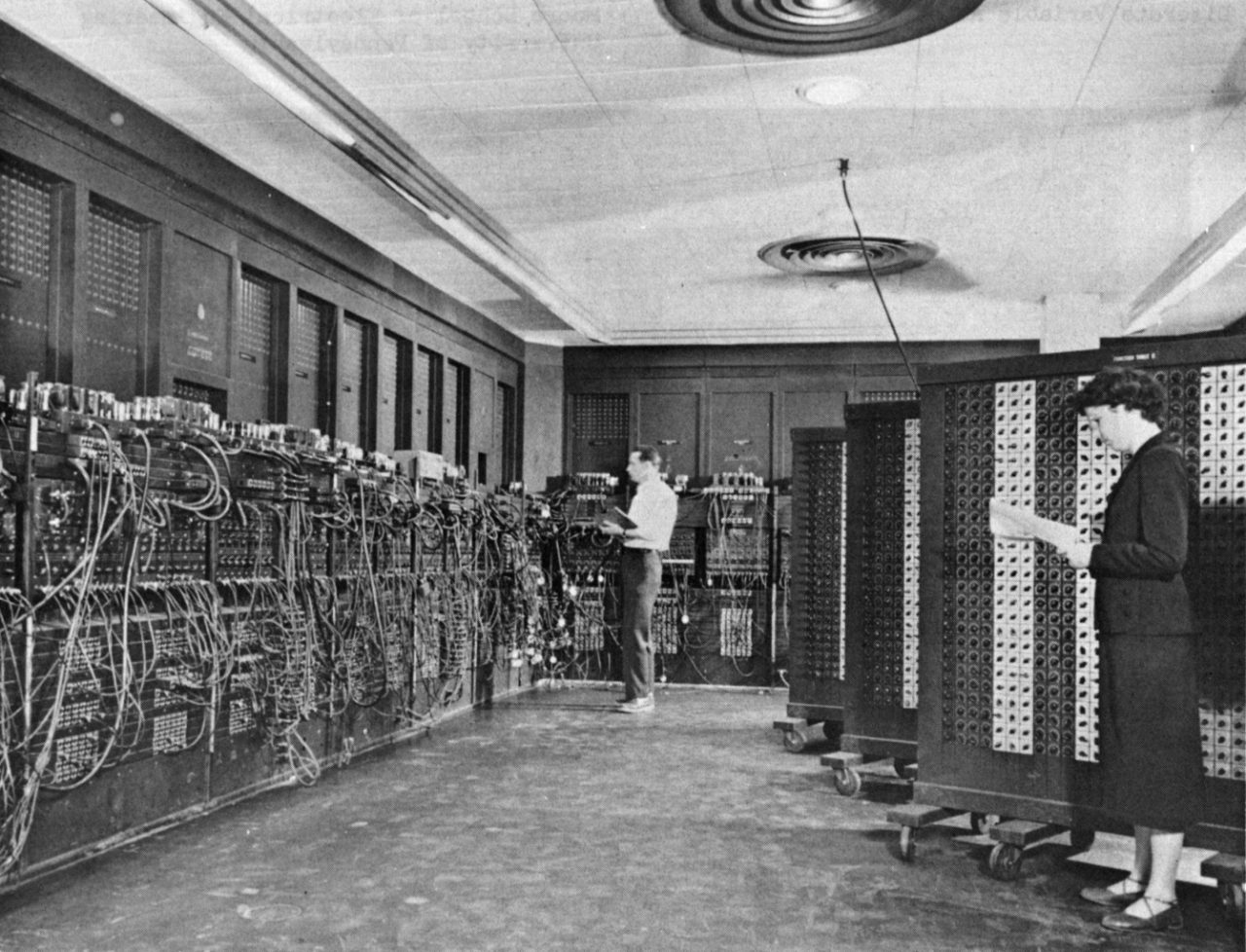The Birth of the Giant Brain
On this day in 1943, a landmark computing project would be started in secret by researchers at the University of Pennsylvania. The project would come to be known as the Electronic Numerical Integrator and Computer (ENIAC), the first completely electronic computer, able to successfully complete complex calculations at incredible speed.
On this day in 1943, a landmark computing project would be started in secret by researchers at the University of Pennsylvania. The project would come to be known as the Electronic Numerical Integrator and Computer (ENIAC), the first completely electronic computer, able to successfully complete complex calculations at incredible speed.
When the work on ENIAC began, those involved in the top secret enterprise referred to it simply as Project PX. As ENIAC was first conceived and programmed to compute ballistics research for the United States Army during World War II, the project was kept hidden from the public until 1946. When ENIAC was then presented to the press, its capabilities and cost$500,000 in the 1940s equals roughly $6,000,000 todaystunned everyone. Journalists nicknamed ENIAC the Giant Brain, and scientists and engineers everywhere thrilled at the possibilities that could follow.
ENIAC was overseen by Major General Gladeon Marcus Barnes, Chief of Research and Engineering for the Army; the computer itself was created by two University of Pennsylvania researchers: John Mauchly and J. Presper Eckert.
ENIAC was, quite literally, a giant brain, occupying 1800 square feet and weighing nearly 30 tons. A Philadelphia rumor claimed that whenever ENIAC was powered on, the city's lights dimmed momentarily.
The computer could execute approximately 5,000 simple arithmetical problems in a second. It could also successfully solve multiplication and division problems and find square roots, also with mere seconds. ENIAC was capable of performing more complex operations; however, programming the machine was a feat in itself and could take weeks.
 A few of the more than 17,000 glass vacuum tubes employed by ENIAC.
A few of the more than 17,000 glass vacuum tubes employed by ENIAC.In addition to other components, ENIAC was made up of more than 17,000 vacuum tubes (see photo above) a vacuum tube is a small mechanism that manipulates electric current via a hot filament, looking a little like a light bulb. These tubes were also common in radios. Due to the War, constructing the tubes was difficult and expensive, and ENIAC suffered some kind of tube failure every two days. It only took a few minutes to locate and repair the problem, but broken vacuum tubes were a frequent difficulty. The longest ENIAC went without a vacuum tube failing was five days.
The next time I complain about how heavy my computer is when I have to carry it from one room to another, I'll need to be sure to think of ENIAC and how its panelseach standing floor to ceiling like a set of kitchen cupboards (see photo below)are now on display at the University of Pennsylvania, the Smithsonian, the London Science Museum, California's Computer History Museum, the University of Michigan, the U.S. Army Ordnance Museum, and West Point Military Academy, and I won't feel quite so bad.
 Four of the original ENIAC panels currently on display at the University of Pennsylvania.
Four of the original ENIAC panels currently on display at the University of Pennsylvania.

 Member Connect
Member Connect